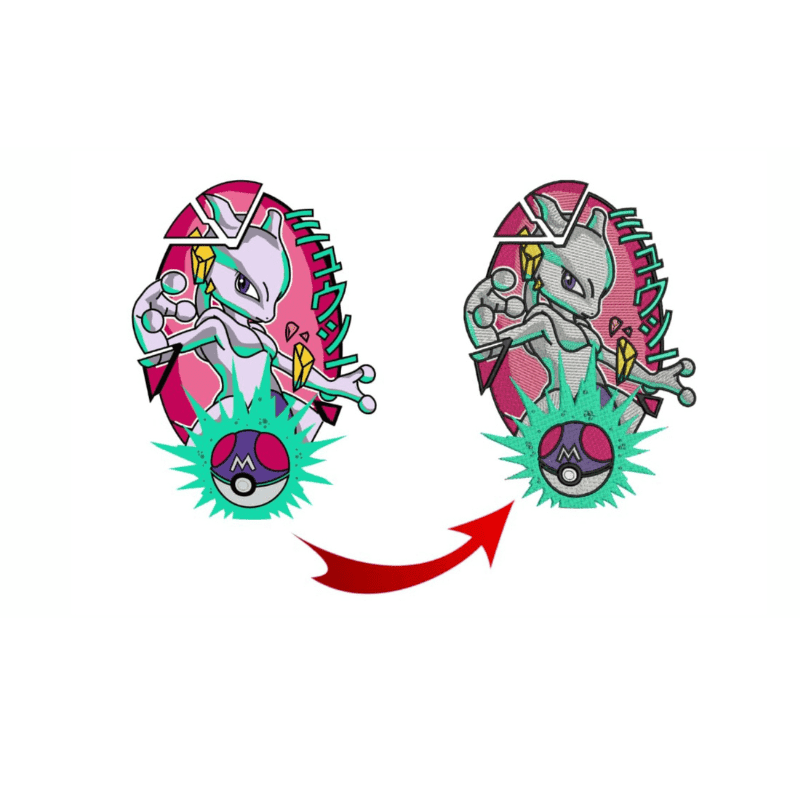Budget-friendly Digitizing for Embroidery: Accuracy and Information
Budget-friendly Digitizing for Embroidery: Accuracy and Information
Blog Article
Understanding the Needlework Digitizing Process: Your Ultimate Overview
Needlework digitizing is a thorough craft that calls for accuracy and expertise to equate complex layouts into electronic layouts for equipment needlework. As craftsmens begin on this trip to grasp the needlework digitizing procedure, a thorough understanding of the basics establishes the structure for excellence.

Recognizing Needlework Digitizing Basics
Embroidery digitizing fundamentals develop the structure whereupon intricate designs are equated right into machine-readable layouts for specific stitching. This initial step in the embroidery digitizing process is crucial for guaranteeing that the final embroidered item is a loyal depiction of the initial style. Comprehending needlework digitizing basics involves grasping key principles such as stitch kinds, sew direction, density, underlay, and draw settlement.
Sew kinds play a crucial function in identifying the visual and textural result of the embroidered design. By selecting the suitable stitch kind, whether it be satin, fill, or running stitch, digitizers can attain the preferred effect and boost the total high quality of the embroidery. In addition, stitch direction affects the flow and measurement of the style, while density determines the spacing and coverage of the stitches.
In addition, rug stitching gives security to the layout by securing the textile and stopping distortion during the needlework process. Draw compensation is an additional necessary consideration to neutralize the natural propensity of material to agreement when sewn. Mastering these needlework digitizing basics is basic for creating professional-quality stitched products.
Picking the Right Digitizing Software Application
Selecting the proper digitizing software is an important decision that considerably influences the efficiency and high quality of the embroidery digitizing process. Digitizing for Embroidery. When choosing the ideal digitizing software program, it is necessary to take into consideration variables such as the intricacy of designs you plan to produce, the user-friendliness of the software application, the level of client assistance provided, and the compatibility with your needlework device
There are various digitizing software program alternatives readily available on the market, ranging from fundamental programs for novices to innovative software application for specialist digitizers. Some preferred selections consist of Wilcom EmbroideryStudio, Hatch Needlework Software Application, and PulseID. These software use a variety of devices and functions to assist you produce complex designs easily.
Prior to making a decision, it is a good idea to check out the different software application choices through complimentary trials or demos to figure out which one ideal fits your requirements. Additionally, reading testimonials and looking for suggestions from seasoned digitizers can supply useful insights right into the staminas and weak points of each software (Digitizing for Embroidery). By very carefully assessing your requirements and contrasting the functions of different digitizing software program, you can make an educated choice that boosts your embroidery digitizing workflow
Digitizing Devices and Methods

Optimizing Layout Setup for Needlework
Grasping the right here intricacies of layout settings is essential in achieving ideal outcomes in the embroidery digitizing procedure, building upon the structure laid by comprehending digitizing devices and techniques. When maximizing style settings for needlework, it is vital to consider aspects such as stitch kind, density, padding, pull settlement, and registration. Enrollment settings straighten various components of the design precisely, keeping general design stability.

Troubleshooting Common Digitizing Issues
When running into typical digitizing concerns during the embroidery procedure, it is important to recognize the origin and apply effective options immediately. One common issue is stitch thickness problems, where stitches may be too thick, creating the basics fabric to tighten, or as well sparse, resulting in voids in the design. Adjusting the stitch density setups in the digitizing software program can help fix this problem.
An additional constant challenge is thread breaks during the needlework procedure. This can take place due to various reasons such as inaccurate tension settings, boring needles, or making use of low-grade string. Ensuring proper maintenance of the embroidery maker, consisting of normal needle adjustments and stress changes, can decrease the occurrence of thread breaks.
Moreover, design registration errors can result in misaligned elements within the embroidery design. Inspecting the design alignment in the digitizing software and making required modifications before stitching can help in avoiding this issue. By addressing these common digitizing issues promptly and effectively, you can guarantee a smoother embroidery process and high-grade ended up items.
Final Thought
In verdict, understanding the needlework digitizing process needs a solid understanding of the basics, the right selection of software, and expertise of devices and techniques. Optimizing over at this website layout setups and fixing common digitizing issues are crucial actions in ensuring high-quality embroidery outcomes. By complying with these steps vigilantly, one can achieve accuracy and effectiveness in the digitizing procedure.
Report this page